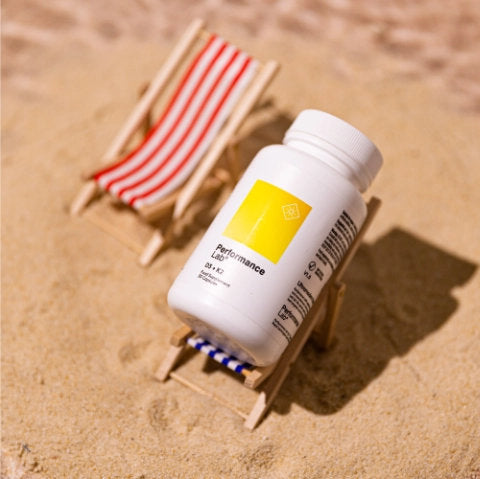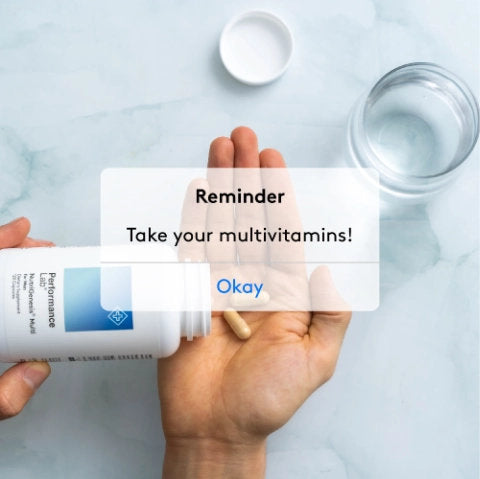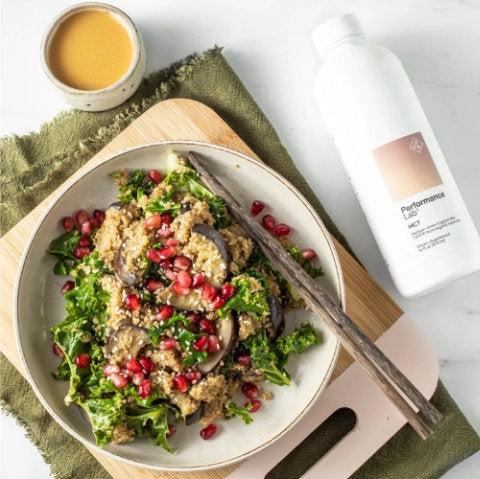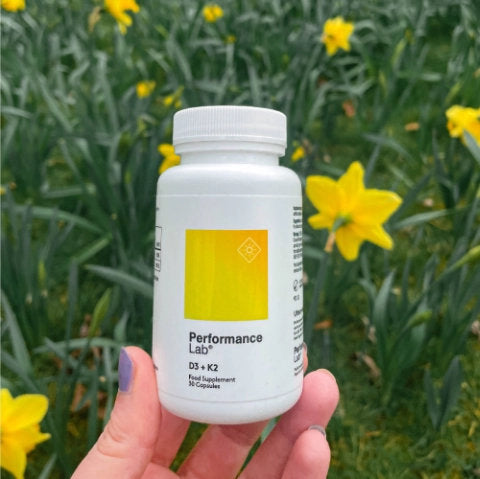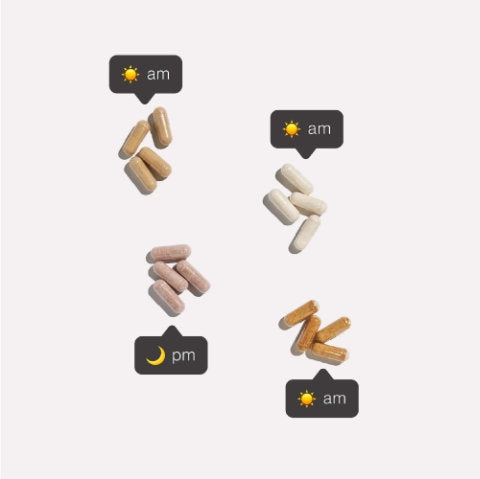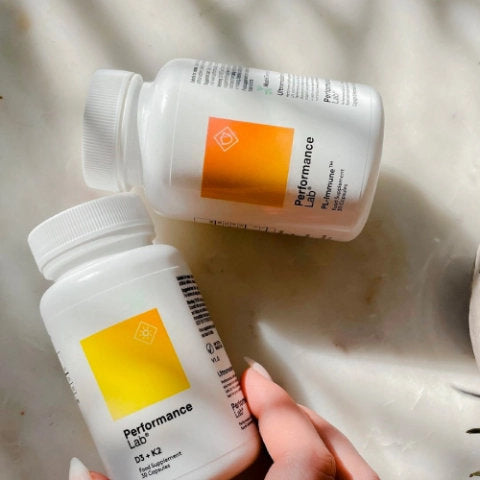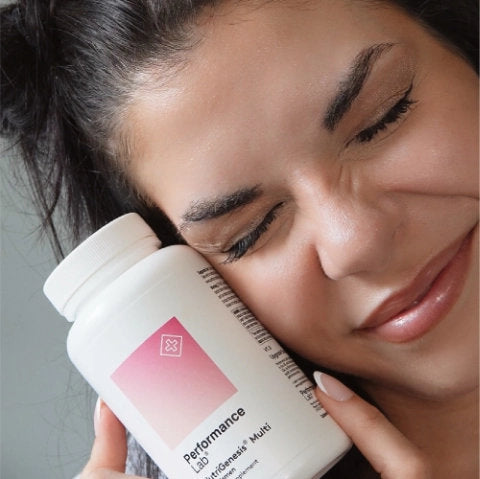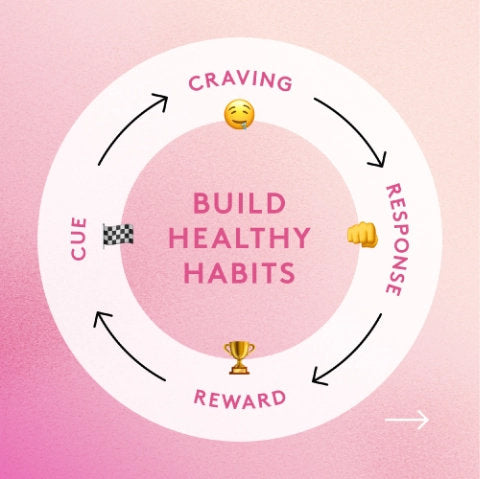Whether it’s for red blood cell production, bone health, or energy, calcium and iron are two essential minerals required for optimal performance. And while you often see them as individual supplements, they’re more commonly packed into a multivitamin. That said, there’s talk about nutrient interactions and if you can take specific vitamins and minerals together—two of which are calcium and iron.So, we’re breaking it down for you. We’re digging into everything you want to know about calcium and magnesium—what they are, why they’re important, and if you can take them together.
What Is Iron And What Does It Do?
When it comes to supplementation, most people don’t talk about iron—it’s one of those nutrients that generally comes through diet or, if you’re low, through supplementation. But for plant-based eaters, iron is one of the most common nutrient deficiencies.You’ll find it in two forms: heme iron and non-heme iron, the former of which is found in animal products and the latter in plant foods. Heme iron is much more bioavailable than non-heme iron and accounts for roughly 95% of functional iron found in the human body 1.
It’s estimated that around 15-35% of heme iron is absorbed, while the absorption rate of non-heme iron is just 2-20%, even though it makes up a significant chunk of the body’s iron pool2.
Non-heme iron absorption is greatly influenced by iron store levels and concomitantly consumed dietary components. Consuming things like ascorbic acid (vitamin C) and meat/fish/poultry may help to increase nonheme iron bioavailability.
But Why Do You Need Iron?
One of the most well-known roles of iron is in heme production, the oxygen-carrying component of red blood cells, but that’s not all it does.
Here’s why you need sufficient oxygen stores:
- Red blood cell production
- Oxygen transport
- Energy metabolism
- Hormone synthesis
And studies find that non-heme iron taken with vitamin C can increase iron absorption by 2.9-fold, and higher concentrations of vitamin C—exceeding 63 mg—can increase iron absorption by up to 400% 3, 4.But here’s the thing with iron—there’s a difference in how your body absorbs heme and non-heme iron and how your body absorbs iron supplements. How and when you take your iron supplement dictates how effectively it’s absorbed and utilized.
What Is Calcium And Why Do You Need It?
Did your parents tell you to drink your milk when you were younger? That’s because dairy products are rich in one of the best nutrients for bone strength—calcium.
While it’s known as one of the most powerful minerals for healthy bones and teeth, calcium plays several critical roles in the body.Here’s why you need it:
- Bone and teeth health
- Blood clotting
- Muscle contraction
- Heartbeat
- Blood pressure
- Nerve function
- Enzyme production and function
But calcium doesn’t work along to maintain bone strength. It works alongside magnesium and vitamin D to keep bones strong and healthy.
Vitamin D is required to help your body absorb calcium. When the active form of vitamin D, 1,25-dihydroxyvitamin D (1,25(OH) 2D), binds to its receptor in the intestine, it stimulates calcium transport from the intestine to the circulation 5.
When vitamin D levels are low, active calcium transport is reduced, which triggers the release of calcium from bones to maintain sufficient levels.
Can You Take Calcium And Iron Together?
The body requires a sufficient intake of calcium and iron to sustain optimal body function, but there’s much talk about if you can take them together. The answer? Yes, but be mindful of how much.
Calcium and iron are two essential minerals, but because they are both absorbed through the same pathway, too much of one can interfere with the absorption of the other 6. A 2011 study published in the Journal of Nutrition looked at the extent of calcium and iron absorption in 54 healthy women supplementing doses between 200mg and 1,500mg of calcium and 5 mg of non-heme iron (ferrous sulfate) and lower doses of 200 and 800 mg on 5 mg heme iron 7.
Results showed that doses exceeding 1,000 mg reduced non-heme iron absorption by roughly 49.6% and doses of 800 mg reduced absorption by 37.7%.That said, other research finds that calcium doesn’t affect iron absorption long-term 6. The body has adaptation mechanisms that prevent calcium from affecting iron status, suggesting that the inhibitory effects of calcium on iron absorption may be acute, and there may be compensatory mechanisms.
Another study found that calcium supplementation is unlikely to significantly impact iron levels unless calcium consumption is chronically low 8. However, some research suggests that taking regular calcium supplements may make it more difficult for women to meet their iron recommendations.When taken in the appropriate amounts, iron and calcium aren’t likely to interact with each other and affect levels. Still, if you’re taking large doses of either, it’s best to separate your supplements.
What Else Does Iron Interact With?
Iron is one of those nutrients you have to be choosy with—it doesn’t go with everything.
Because certain minerals all use the same absorption pathways in the body, you have to be careful about supplementing them simultaneously, and if you are taking them at the same time, how much you’re supplementing.The biggest nutrient interaction is between iron and zinc. It’s suggested that there is competitive inhibition of zinc uptake when iron levels exceed a 2:1 ratio 10.
Other compounds that may interfere with iron absorption include:
- Magnesium
- Copper
- Tea, coffee, cocoa
- Peppermint
- Chamomile
The biggest hitters that inhibit iron absorption are a class of compounds called anti-nutrients. They are compounds naturally present in foods—mainly vegetables, coffee, tea, etc.—that reduce the bioavailability of certain minerals 11.These compounds include:
- Lectins: Legumes, cereal grains, seeds, nuts, fruits, vegetables
- Oxalates: Leafy greens (spinach, chard, sorrel, beet greens), beetroot, rhubarb, nuts, legumes, cereal grains, potatoes, sweet potatoes
- Goitrogens: Brassica vegetables (kale, cabbage, Brussels sprouts, cabbage, turnip greens, broccoli), millet, cassava
- Phytoestrogens
- Phytates: Legumes, cereal grains, pseudo-grains (amaranth, quinoa, millet), nuts, seeds
- Tannins: Tea, cocoa, grapes, berries, apples, stone fruits (peaches, nectarines, plums, etc.), nuts, beans, whole grains
Phytates and tannins appear to have the most significant effect on iron absorption, whereas oxalates inhibit calcium absorption.
While these compounds are naturally present in foods, soaking, sprouting, fermenting, and other cooking methods can help to reduce anti-nutrient concentrations and maximize nutrient absorption. The other option you have is to invest in a good multi that does the work for you—interactions aside. Performance Lab NutriGenesis Multi takes the work out of supplementation.
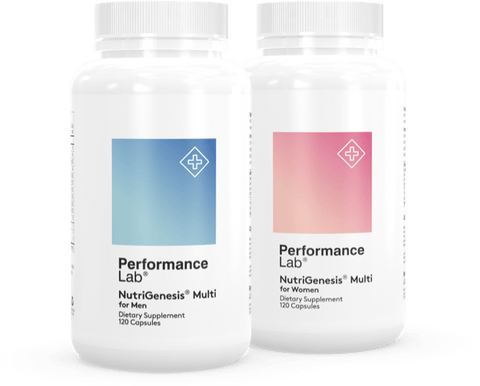
With 17+ essential vitamins and minerals complexed with cofactors to maximize absorption, Multi ensures your body has what it needs to function optimally.
With gender-specific doses designed to restore nutrient levels and support hormonal balance, Multi is the smartest, most comprehensive multivitamin on the market.
References
- Hooda J, Shah A, Zhang L. Heme, an essential nutrient from dietary proteins, critically impacts diverse physiological and pathological processes. Nutrients. 2014;6(3):1080-1102.
- Monsen ER. Iron nutrition and absorption: dietary factors which impact iron bioavailability. J Am Diet Assoc. 1988 Jul;88(7):786-90.
- Fidler MC, Davidsson L, Zeder C, Hurrell RF. Erythorbic acid is a potent enhancer of nonheme iron absorption. Am J Clin Nutr. 2004 Jan;79(1):99-102.
- Walczyk T, Muthayya S, Wegmüller R, Thankachan P, Sierksma A, Frenken LG, Thomas T, Kurpad A, Hurrell RF. Inhibition of iron absorption by calcium is modest in an iron-fortified, casein- and whey-based drink in Indian children and is easily compensated for by the addition of ascorbic acid. J Nutr. 2014 Nov;144(11):1703-9.
- Lips P. Interaction between vitamin D and calcium. Scand J Clin Lab Invest Suppl. 2012;243:60-4.
- Lönnerdal B. Calcium and iron absorption--mechanisms and public health relevance. Int J Vitam Nutr Res. 2010 Oct;80(4-5):293-9.
- Gaitán D, Flores S, Saavedra P, Miranda C, Olivares M, Arredondo M, López de Romaña D, Lönnerdal B, Pizarro F. Calcium does not inhibit the absorption of 5 milligrams of nonheme or heme iron at doses less than 800 milligrams in nonpregnant women. J Nutr. 2011 Sep;141(9):1652-6.
- Lynch SR. The effect of calcium on iron absorption. Nutr Res Rev. 2000 Dec;13(2):141-58.
- Cook JD, Dassenko SA, Whittaker P. Calcium supplementation: effect on iron absorption. Am J Clin Nutr. 1991 Jan;53(1):106-11.
- Solomons NW. Competitive interaction of iron and zinc in the diet: consequences for human nutrition. J Nutr. 1986 Jun;116(6):927-35.
- Petroski W, Minich DM. Is There Such a Thing as "Anti-Nutrients"? A Narrative Review of Perceived Problematic Plant Compounds. Nutrients. 2020;12(10):2929.

